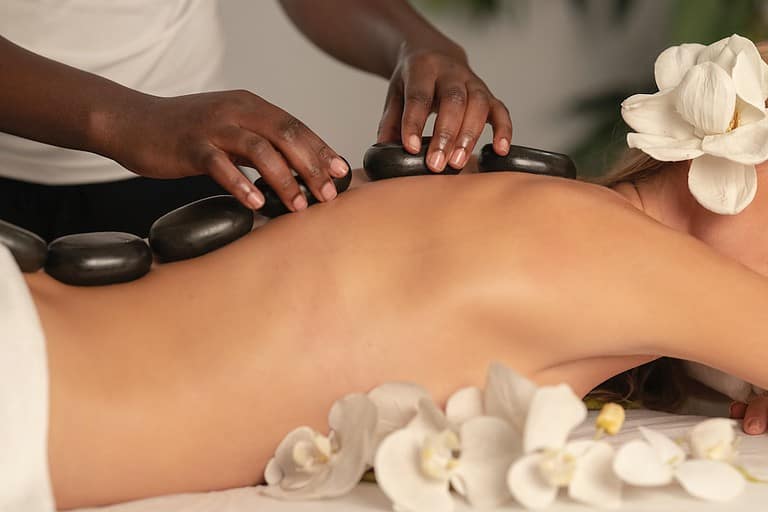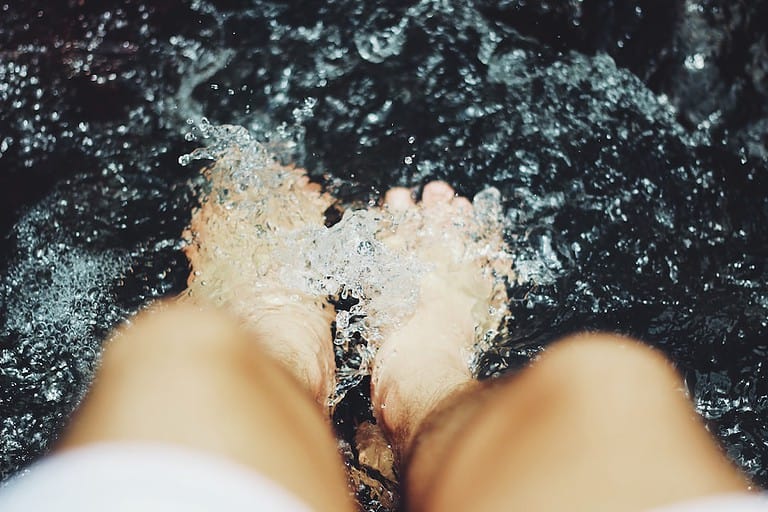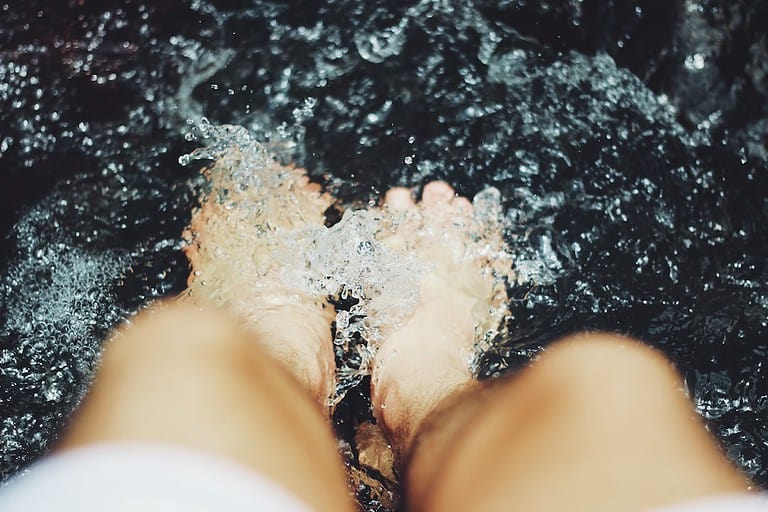What Is Contrast Therapy? Wellness Practice at Home
What is contrast therapy? Contrast bath therapy involves alternating between hot and cold temperatures in order to achieve therapeutic effects. It has been used by therapists around the world for centuries with great success.
In this article, we will explore what is contrast therapy and how to do it correctly so you can practice it safely at home.
Read on to learn more about how contrast bath therapy works!
Table of Contents
What is Contrast Therapy?
Contrast water therapy, also known as contrast hydrotherapy or thermotherapy, is a type of physical therapy that uses alternating hot and cold temperatures to treat various medical conditions. This form of treatment has been used for centuries in traditional medicine and is now becoming more popular in modern healthcare settings.
The goal of contrast immersion therapy is to reduce inflammation, improve circulation, relieve pain, and promote healing.
Contrast therapy It can be done with contrast baths (hot baths/cold showers), compresses (hot packs/cold packs), saunas or steam rooms combined with ice baths, or any combination thereof. The temperature difference between the two applications should be at least 10°C (18°F).
Now let’s look at how contrast baths work.
How to Apply Contrast Therapy
Preparing for a contrast therapy session requires some basic knowledge about the different types of treatments available and how to use them safely.
When preparing for a contrast therapy session, it’s important to consider your individual needs and goals. Talk with your doctor or therapist about what type of treatment would be best for you based on your health history and current condition.
You should also make sure you have all the necessary supplies before beginning any type of contrast therapy session such as towels, ice packs, heating pads, etc.
Safety Guidelines
Avoid extreme temperature changes (hot or cold) and don’t do too many sessions in one day. It’s important to listen to your body during these treatments so if something feels uncomfortable or painful, stop immediately and consult with your doctor or therapist before continuing further treatments.
Make sure you know what temperature ranges are safe for each type of treatment. Never exceed recommended levels without consulting a professional first.
Always keep an eye out for signs of frostbite which can occur quickly at very low temperatures during cold therapy. If your skin begins to feel numb, take a break until symptoms subside completely.
Contrast therapy can be a great way to relax and improve overall health. By understanding how to use contrast therapy safely, you can reap the benefits of this powerful technique.
Next, let’s look at some examples of contrast therapies that you can do at home.

(Source)
What is Contrast Therapy For?
Contrast bath therapy is an ancient practice that has been used for centuries to help people with chronic pain, muscle spasms, skin disorders, and other medical issues.
The primary goal of contrast immersion therapy is to reduce inflammation by stimulating blood flow throughout the body. This increased circulation helps deliver oxygen-rich blood cells which are essential for healing damaged tissues while removing toxins from them at the same time.
Immersion therapy can also help alleviate muscle tension and spasms as well as joint stiffness due to arthritis or other chronic conditions like fibromyalgia.
Furthermore, this type of treatment may help improve mental clarity by reducing stress levels caused by physical discomfort associated with certain illnesses such as migraines or back pain.
Here are some of the benefits of contrast bath therapy.
- Improved circulation.
- Reduced swelling.
- Relief from muscle tension.
- Increased energy levels.
- Better sleep quality.
- Improved digestion.
- Strengthened immune system.
- Reduction in stress levels.
- Detoxification of toxins from the body tissues and organs through sweating.
Additionally, those suffering from diabetes may find that contrast baths help regulate their blood sugar levels due to their ability to boost circulation throughout the body.
If you have a pre-existing medical condition, talk to your doctor first before trying contrast bath therapy. There are certain conditions that could make water immersion unsafe such as pregnancy, heart disease, high blood pressure, and kidney problems.
Individuals who have had recent surgery should also avoid using this form of hydrotherapy until they have fully recovered.
Cold Therapy
Cold therapy involves exposing the body to cold temperatures in order to stimulate healing and reduce inflammation. Cold therapy can be done through a variety of methods including ice baths, cold showers, and cryotherapy.
Cold therapy helps improve circulation by constricting blood vessels and reducing swelling. This can help with muscle soreness after exercise or injury recovery.
Additionally, it may help boost the immune system by increasing white blood cell count and stimulating lymphatic drainage.
Cold therapy also stimulates endorphin production which can lead to improved mood.
Here are some of the most popular types of cold therapy.
Ice Baths
Ice baths involve submerging yourself in an ice-filled bathtub for 10-15 minutes at a time (or longer if you’re feeling brave.). Extreme temperature shock causes vasoconstriction which helps reduce inflammation while providing pain relief from sore muscles or injuries.
However, ice baths should not be used if you have any open wounds as this could cause further damage or infection.
Cold Showers
Taking regular cold showers is another way to reap the benefits of cold therapy without having to invest in expensive equipment. Aim for 3-5 minutes per shower but start slowly with just 30 seconds at first then gradually increase over time as your body adjusts to colder temperatures.
Cryotherapy Chambers
Cryotherapy chambers use liquid nitrogen vaporized into airtight rooms where temperatures range between -100°C (-148°F) to -140°C (-220°F). Sessions typically last around 2-3 minutes during which time users will wear protective clothing such as gloves, socks, and breathing masks so they don’t inhale too much nitrogen gas.
No matter what method you choose, make sure you listen to your body so that you don’t push yourself too far.
Heat Therapy
Heat therapy is a great way to help reduce pain and inflammation in older injuries. The heat helps relax the muscles, increase circulation, and improve flexibility. It can also be used to relieve tension headaches or menstrual cramps.
When using heat therapy, bear in mind that too much heat can cause further damage so it’s best to start with low temperatures and gradually increase as needed. You should never use any type of heating pad on an open wound or sore skin.
There are several ways you can apply heat including hot baths, showers, electric heating pads, microwavable heating pads, gel packs, and infrared saunas. When using any type of electrical device, make sure it has an automatic shut-off feature for safety reasons.
Apply heat for 15-20 minutes at a time but not more than once per hour unless directed by your doctor or physical therapist.
Conclusion
Now that you know what is contrast therapy, you can start enjoying its therapeutic benefits at home. This technique has been known to reduce stress, improve circulation, enhance sleep quality, boost immunity levels, and much more!
Do you want to live a healthier and more independent life? Smart Living Now provides no-fluff wellness and self-care resources to help you achieve your goals. Take the first step towards living smarter with our simple yet effective solutions for improved well-being!







